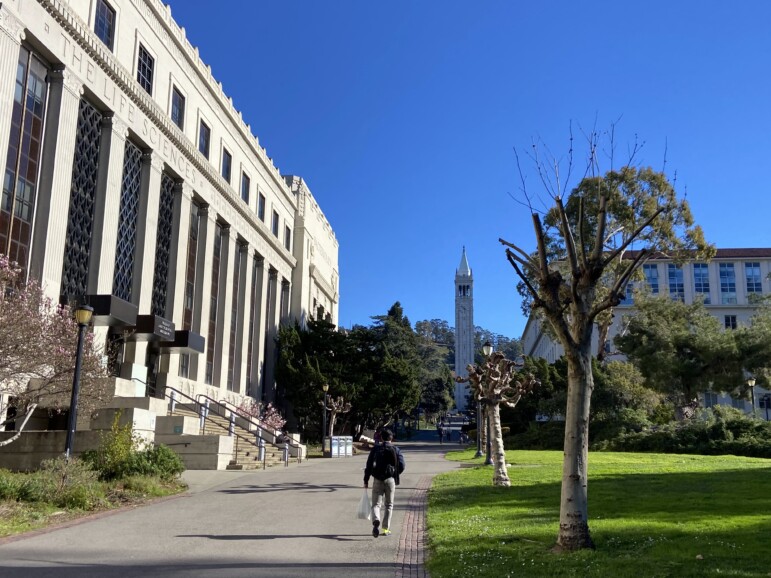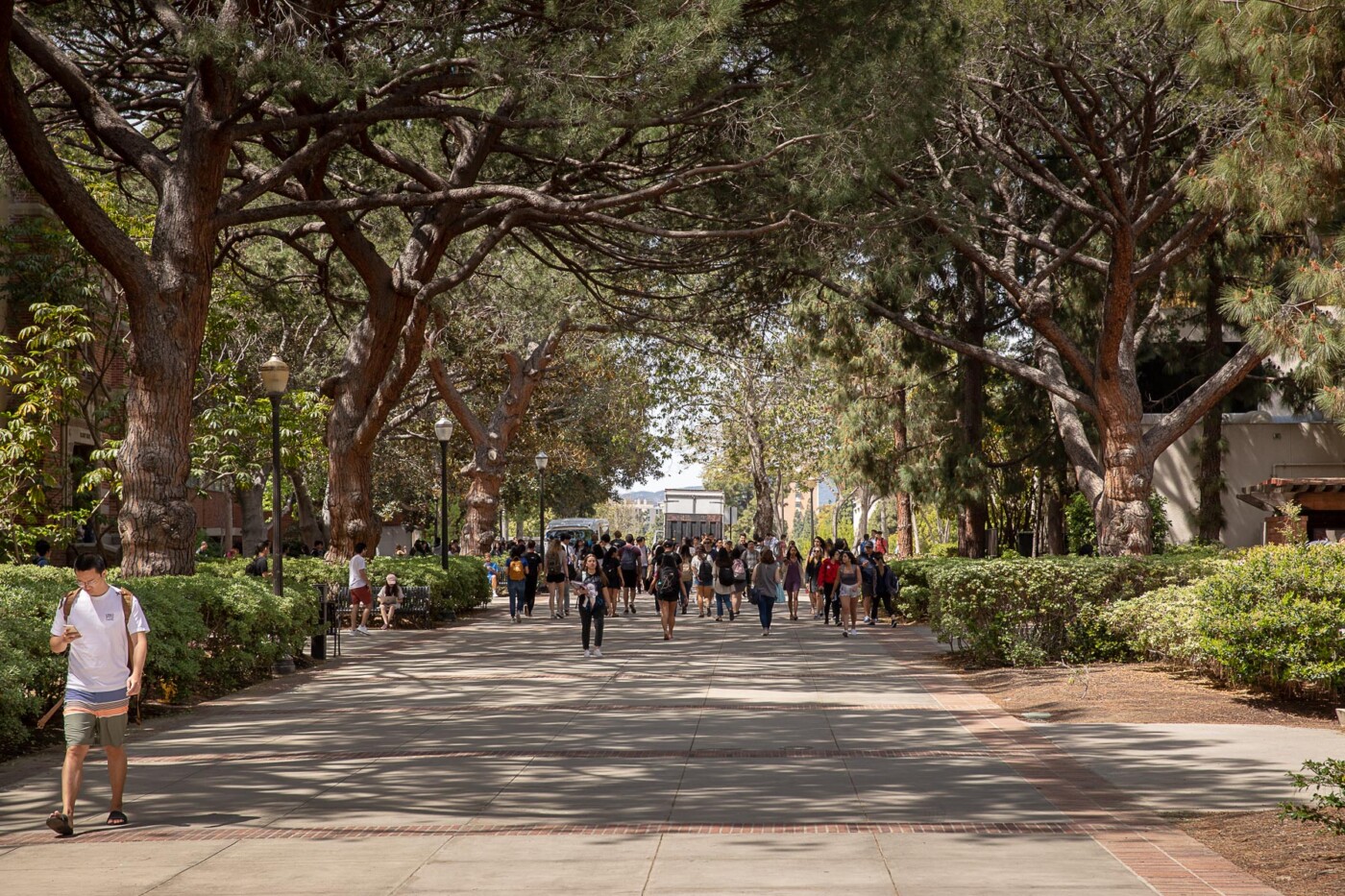State lawmakers Wednesday demanded that the University of California system make more space for California residents — particularly at its most competitive campuses — even if it means charging higher tuition to those who come from out of state.
The number of non-resident students has declined at most UC campuses, ticking down from 17.7% to 16.3% systemwide over the past two years. Increasing pressure from the Legislature led the state to create a plan in the Budget Act of 2021 to increase the enrollment of Californians in the UC system over five years. The system has enrolled more in-state residents — but not enough to meet targets set by the state.
Assemblymember David Alvarez, D-San Diego, noted that most UC campuses reject more than half of their applicants, including many highly qualified California residents.
“This is frustrating for a lot of Californians,” Alvarez said during an Assembly budget hearing addressing college enrollment in the state.
Assemblymember Al Muratsuchi, D-Torrance, shared a story from a constituent who said she graduated with a 4.67 GPA, took 12 AP courses, and was a varsity captain. She told him she applied as a political science major at four competitive UC campuses and was rejected from all, only to enroll at an out-of-state school.
“What would you tell this student about why she can’t attend the UC campus of her dreams?” Muratsuchi said.
A report from the Legislative Analyst’s Office (LAO) called it “frustrating” that during a time of “tremendous demand,” the UC system fell nearly 1,400 full-time equivalent students short of its target to enroll more in-state students this year, as set by the 2023-24 Budget Act.
Assembly members said they also have concerns about nonresidents increasingly edging out California residents at a few CSU campuses. Nonresidents made up 17% of enrollment at Cal Poly San Luis Obispo and 14.6% at San Diego State in 2022-23.
The LAO report notes that community college enrollment has begun to rebound after a precipitous decline during the pandemic. But its decline has created a domino effect by reducing the number of students transferring to CSU. Enrollment at the University of California has been growing, but it has not kept pace with student interest, as indicated by the rapidly rising number of applications. Unique applications to the UC system increased by 30% from 2013 to 2022.
Looking to the future, the systems — especially the community colleges and CSU — face continuing challenges attracting enough students. The report also noted that the numbers of traditional college age students are expected to decline in the coming years, just as they have in California’s K-12 school system.
Muratsuchi asked whether it might be time to rethink the way funds are allocated, not just between campuses but also between UC and CSU campuses. He pointed to the increased demand at UC campuses and declining interest at many CSU campuses.

The UC system does plan to address demand from California residents in the long term by adding between 23,000 and 33,000 full-time equivalent students by 2030. UC Merced and UC Riverside would account for 30% to 35% of that growth, while UC Berkeley, UCLA and UC San Diego would account for half or more of that growth. The UC system contends that this plan would rely on state funding to pay for an increase in California residents.
Seija Virtanen, associate director of state budget relations for the University of California Office of the President, said the UC system became more reliant on nonresident students to backfill massive budget cuts during the Great Recession of 2008. Each nonresident student pays nearly three times the tuition paid by resident students.
For 2024-25, Californians will pay $14,436 for undergraduate tuition, while nonresidents will pay $48,636.
“If we were to remove those funds, it would be catastrophic for our campuses,” Virtanen said.
Currently, the state is providing the UC system with an additional $31 million each year to support more California residents attending UC campuses, supplanting the funds that nonresidents bring in. Over the last two years, UC has enrolled over 2,600 fewer nonresidents. It has also enrolled nearly 5,900 additional in-state residents, but that is nearly 1,400 students short of the state target.
Alvarez proposed raising tuition for nonresidents to cover this $31 million in annual funds from the state. Using back-of-the-napkin math, Alvarez noted that passing along $31 million in tuition to 20,000 nonresident students would increase their tuition by about $1,500 each year. There are an estimated 36,630 nonresident students in the UC system. Alvarez suggested a follow-up hearing to discuss raising nonresident tuition.
During public comment, UC alumni-regent Keith Ellis agreed that it would be “worthy” to give the plan to raise nonresident tuition serious consideration.
CSU, where most campuses have seen enrollment drop, has room in its budget to add 24,000 full-time students, according to the LAO report. Only four of the 23 campuses — Fullerton, Long Beach, San Diego, and San Luis Obispo — have increased their enrollment since fall 2019.
Seven campuses are enrolling at least 20% fewer students than four years ago, including campuses in Sonoma, the Channel Islands, the East Bay, Chico, Humboldt, Bakersfield, and San Francisco.
Nathan Evans, deputy vice chancellor for academic and student affairs at CSU, said there is a plan to reallocate resources from campuses that have seen a sustained drop in enrollment to those where there is more demand. He said this reallocation needs to be done over several years.
“We’re not going to pull the rug out from any institution,” he said.
Evans noted that demographic changes in rural areas in Northern California and the Bay Area mean enrollment is not likely to rebound. The number of families with college-age students has been declining in these areas.
Evans said the CSU system is also working on increasing enrollment through partnerships with K-12 districts, marketing and attempting to reengage students who may have stopped out.
